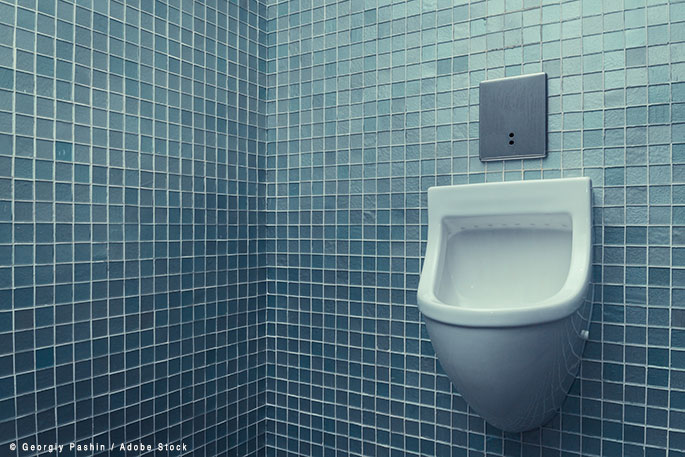
While more than 70 percent of the planet earth is covered in water in one form or another, between sea water and glacier ice only about 1 percent of that water is potable. Given the ever-increasing needs of the human population for clean, drinkable water, water conservation efforts have been getting a lot of attention. One water conservation solution that has a huge amount of potential is the waterless urinal; an invention that could mean literally billions of gallons of water saved every single year.
What Is A Waterless Urinal?
As the name implies, a waterless urinal is a urinal that uses a method other than water to eliminate urine. Some urinals use an alternative chemical sealant, which will need to be replaced periodically, and other urinals use rubber seals that let urine in, but which won’t let anything come back the other way. Different companies use different methods, which is why it behooves a business owner or government considering installing these water saving devices to see what the actual process they use is before purchase and installation.
How Much Water Can They Save?
This depends on which models one uses, how often the urinals in question are used, and a slew of other factors. According to Klaus Reichardt, the founder of Waterless Co Inc. in San Diego, California, it’s possible for a waterless urinal (or at least the ones his company produces) to save an average of 15 to 30 thousand gallons of water per year. That’s for a single unit; the more units that get installed, the more water that gets conserved. Given that each unit costs between $200 and $500, that’s a saving that will quickly pay for itself on the utility bill.
What’s The Large-Scale Potential?
Generally speaking, people don’t consider the sheer amounts of clean water they use every day for purposes other than drinking. Between showering and shaving, washing hands and dishes, and for waste disposal, there are literally millions and millions of gallons of water going down the drain every day. If you don’t have to use water for something as simple as a urinal, then why not take that stress off the water supply and see what it does to sustainability efforts?




































































































































 Three Ways to Engage Teams and Clients to Maximize Your Recycling Program Engagement
Three Ways to Engage Teams and Clients to Maximize Your Recycling Program Engagement  How to Integrate Accessibility Into Your Sustainability Planning
How to Integrate Accessibility Into Your Sustainability Planning  Why Park Benches Can Promote Workplace Well-Being
Why Park Benches Can Promote Workplace Well-Being 
